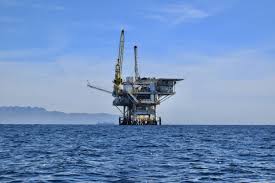The world’s oceans are vast, mysterious, and largely unexplored. Beneath the surface, lies a wealth of resources, ecosystems, and possibilities that have remained hidden from human eyes for centuries. In recent decades, advances in deep offshore technology have unlocked new frontiers, enabling humanity to explore, extract, and utilize resources from the ocean’s depths. These technologies are revolutionizing industries such as oil and gas, renewable energy, marine biology, and underwater robotics.
This article explores the evolution, applications, and future prospects of deep offshore technology, examining how innovations in this field are shaping the future of ocean exploration, energy production, and even environmental sustainability.
What is Deep Offshore Technology?
Deep offshore technology refers to the advanced systems and tools designed to operate in the deep ocean, usually at depths greater than 200 meters. This technology encompasses a wide range of solutions, from underwater drilling rigs and remotely operated vehicles (ROVs) to autonomous underwater vehicles (AUVs) and subsea infrastructure for oil and gas extraction.
The main goal of deep offshore technology is to enable safe, efficient, and sustainable exploration, extraction, and monitoring of oceanic resources. These resources can include fossil fuels, minerals, renewable energy sources, and marine biodiversity. As the demand for these resources grows, the need for cutting-edge technology to explore and exploit the ocean floor has never been greater.
Key Areas of Deep Offshore Technology
The development of deep offshore technology spans several key areas, each addressing different needs and challenges. Let’s take a look at some of the most important technological innovations shaping the deep offshore sector.
1. Subsea Oil and Gas Exploration
One of the primary applications of deep offshore technology is in oil and gas exploration. As land-based reserves of fossil fuels deplete, companies are turning to the ocean’s depths to secure new sources of energy. Offshore drilling platforms, such as semi-submersible rigs and drillships, are engineered to operate in deepwater conditions, reaching depths where traditional drilling would be impossible.
Technologies such as seismic imaging, hydrographic surveying, and drilling robotics have enabled oil companies to locate and extract reserves located under the ocean floor. Subsea production systems have advanced significantly, allowing oil to be extracted from reserves located miles beneath the sea surface. These systems use advanced robotics and automation to manage extraction operations, reducing the need for human intervention and improving safety.
2. Subsea Infrastructure and Pipelines
Once oil and gas are extracted from beneath the ocean floor, the next challenge is transportation. This is where subsea infrastructure, including pipelines and subsea storage systems, comes into play. Deep offshore technology has made it possible to lay pipelines on the ocean floor, even at great depths, to transport oil and gas to land-based refineries.
To maintain the integrity and safety of subsea pipelines, sophisticated monitoring systems are deployed. These include sensors for pressure, temperature, and flow rate, as well as leak detection systems. The development of subsea intervention technology, which allows for repairs and maintenance of subsea infrastructure remotely, has further enhanced the feasibility of deep offshore energy extraction.
3. Renewable Energy: Harnessing the Power of the Ocean
In addition to fossil fuel extraction, deep offshore technology is also playing a pivotal role in the growth of renewable energy sources derived from the ocean. Offshore wind farms, tidal energy, and wave energy are gaining traction as sustainable alternatives to traditional energy sources.
Offshore wind turbines, for instance, have become increasingly efficient and cost-effective. Floating wind turbines are now being designed to operate in deeper waters where winds are stronger and more consistent. These turbines are anchored to the ocean floor using subsea cables, which transmit the power generated to onshore grids. Advances in materials science and subsea engineering have enabled wind farms to be built farther from shore, reducing the impact on local ecosystems and providing power to larger populations.
Similarly, tidal energy and wave energy technologies are being developed to capture the kinetic energy from ocean currents and surface waves. These technologies use underwater turbines, oscillating bodies, and other innovative devices to convert the motion of the water into electricity. As these technologies mature, they offer the potential for clean, renewable energy that could help reduce reliance on fossil fuels and mitigate climate change.
4. Autonomous Underwater Vehicles (AUVs) and Remotely Operated Vehicles (ROVs)
One of the most significant advancements in deep offshore technology has been the development of autonomous underwater vehicles (AUVs) and remotely operated vehicles (ROVs). These robots have become essential tools for exploring and monitoring the ocean depths.
AUVs are designed to operate autonomously, conducting surveys of the ocean floor, collecting data, and mapping the environment. Equipped with sensors, cameras, and advanced imaging technology, AUVs can explore areas that would otherwise be unreachable by human divers or surface vessels. These vehicles are used extensively in marine research, oil and gas exploration, mineral extraction, and environmental monitoring.
ROVs, on the other hand, are remotely controlled by operators aboard surface vessels. They are used for tasks such as subsea inspections, pipeline maintenance, and deepwater drilling operations. ROVs are equipped with robotic arms, high-definition cameras, and other specialized tools to perform intricate tasks at great depths.
The ability of AUVs and ROVs to operate in harsh conditions without putting human lives at risk has revolutionized offshore exploration and opened up new possibilities for deep ocean exploration.
5. Deep-Sea Mining and Mineral Exploration
In addition to oil and gas, the ocean floor is also rich in valuable minerals, including manganese nodules, cobalt, nickel, and rare earth elements. Deep-sea mining has emerged as a new frontier for extracting these resources, and advanced technologies are being developed to make this process more efficient and environmentally sustainable.
Subsea mining vehicles, equipped with cutting-edge robotic systems, are used to extract minerals from the ocean floor. These vehicles use high-pressure water jets to break up the seabed and collect materials for processing. Although deep-sea mining remains controversial due to its potential environmental impact, technological advances are being made to minimize harm to fragile marine ecosystems.
Challenges and Future of Deep Offshore Technology
While deep offshore technology has made tremendous strides, there are still several challenges to overcome. Operating at extreme depths involves significant technical and financial risks, and safety concerns remain a top priority. The deep ocean is a harsh and unforgiving environment, with immense pressure, cold temperatures, and limited visibility. Innovations in materials, robotics, and data processing will be critical to ensuring the future of deep offshore exploration.
Furthermore, the environmental impact of offshore drilling, mining, and energy production remains a subject of concern. As offshore technologies continue to evolve, the focus is shifting towards sustainability. The development of technologies that reduce carbon emissions, protect marine ecosystems, and promote renewable energy sources will play a key role in the future of deep offshore industries.
Conclusion: The Future of Deep Offshore Technology
Deep offshore technology is transforming the way we interact with the ocean and harness its resources. With advancements in oil and gas extraction, renewable energy, mineral exploration, and underwater robotics, the potential for new discoveries and innovations in the deep sea is vast. As these technologies continue to evolve, they will not only shape the future of ocean exploration and energy production but also help address some of the world’s most pressing challenges, including climate change and resource scarcity.
As we look toward the future, it is clear that deep offshore technology will be at the forefront of global innovation, unlocking new possibilities and expanding our understanding of the ocean’s depths. With the right investments in research, sustainability, and safety, the potential for a more connected, sustainable, and resource-efficient world lies just beneath the surface.


